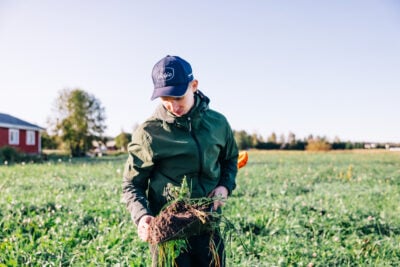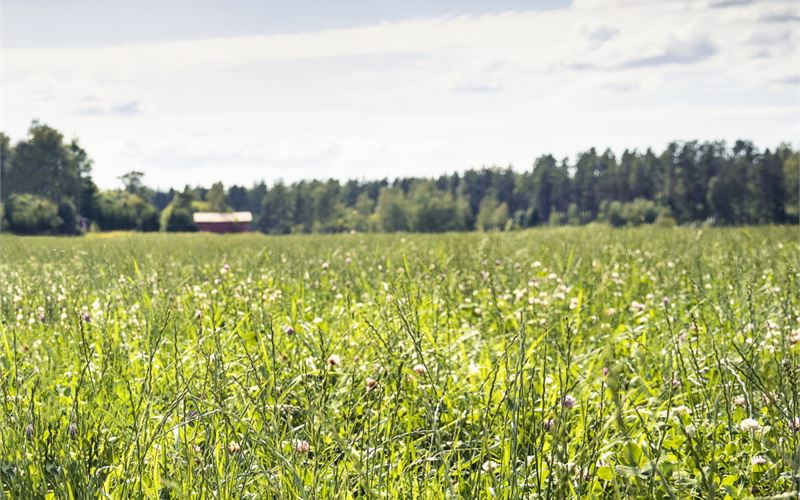A University of Oxford research group has developed a new calculation method for short-lived GHGs. This method is called GWP*. It better reflects methane’s warming impact. For a long time, it has been suggested that this new calculation method should be adopted specifically for biogenic methane emissions in agriculture alongside the GWP100 method. However, the transition is slow, as everyone needs to adopt the new calculation simultaneously, and the old method has been in use for over 70 years. Additionally, the global methane budget is in surplus, meaning more methane enters the atmosphere from various sources than what’s broken down through auto-oxidation annually. Furthermore, the old GWP100 method works fairly well in relation to the global methane budget.
Returning to Finnish cows and their methane production: Methane is produced in the stomachs of cows in an anaerobic (oxygen-free) environment. Microbes in the stomach have the ability to digest fibrous feed, like grass. This ability is absent in single-stomached animals and humans. Ruminants can thus produce high-quality food for humans from grass and fibrous byproducts. In this anaerobic fermentation process in the stomach, microorganisms produce energy-rich fatty acids (used by the cow) as well as hydrogen, which in high concentrations is harmful for both microbes and the cow. Hydrogen must be removed from the stomach. The most efficient way for microbes to remove hydrogen is to convert it into methane, which the cow burps out. This process is so energetically efficient for microbes that it’s challenging to intervene. Researchers have been trying for decades, but with limited success. In essence, methane formation in anaerobic fermentation is a biological foundation that’s difficult to change, yet it brings enormous benefits in food and energy production.
Methane produced in the rumen is derived from the feed plants that cows consume. Plants capture carbon from carbon dioxide in photosynthesis and create various carbon compounds, like sugars, fibre, proteins, and fatty acids. Cows use these compounds as food, but part of the carbon in the feed is returned to the atmosphere as methane. For dairy cows, methane production accounts for about 6-6.5% of the gross energy intake from feed. After cows burp, methane oxidises in the atmosphere back to carbon dioxide within roughly 10 years, thus returning to plants for photosynthesis and restarting the carbon cycle. This cycle is referred to as the biogenic carbon cycle. Importantly, the carbon dioxide formed from the methane burped by cows into the atmosphere is carbon-neutral, as it’s part of the cycling carbon and doesn’t add to the atmosphere’s overall carbon pool. The additional warming impact of methane only occurs during the time when carbon is in the form of methane in the atmosphere, which is about 10-12 years.
As an example, consider a dairy farm with a hundred cows, and the size of the herd remains constant year after year. In this case, over time, the amount of methane released by the herd reaches an equilibrium state. Annually, the amount of methane produced by cows in this equilibrium state is equal to the amount of methane that has decayed into carbon dioxide in the atmosphere. The methane production from a stable-sized herd is climate-neutral, meaning it doesn’t contribute to additional heating because the thickness of the thermal blanket remains constant. If the herd size increases, the thickness of the methane blanket grows, leading to additional heating of the climate. If the herd size decreases or other measures are taken to limit methane production, the methane blanket thins, leading to negative warming, or cooling, of the climate. In other words, there are fewer methane molecules in the atmosphere trapping solar radiation. This example of a dairy farm with 100 cows illustrates that the climate impact of methane emissions from a stable-sized herd is very different from, say, the CO2 emissions from a coal-burning power plant. The methane blanket from a stable-sized herd remains consistent because it’s part of a biogenic carbon cycle, and the amount of carbon in the atmosphere doesn’t increase. On the other hand, the power plant emits carbon that was locked away for hundreds of millions of years. When released into the atmosphere, it thickens the thermal blanket, contributing to climate change.
To summarise, Finnish cattle farming, like all ruminant livestock farming, indeed produces methane. However, the methane originates from plants that have captured carbon from the atmosphere; after being released from cows, the methane eventually turns back into carbon dioxide through natural processes within roughly 10-12 years. This biogenic carbon cycle distinguishes methane emissions from fossil carbon emissions. It’s also important to note that methane’s warming potential over a short period, like 20 years, is significantly greater than its potential over a longer period, like 100 years, due to its shorter residence time in the atmosphere. Policymaking and public debate should reflect this when assessing the climate impact of methane from ruminant livestock.








